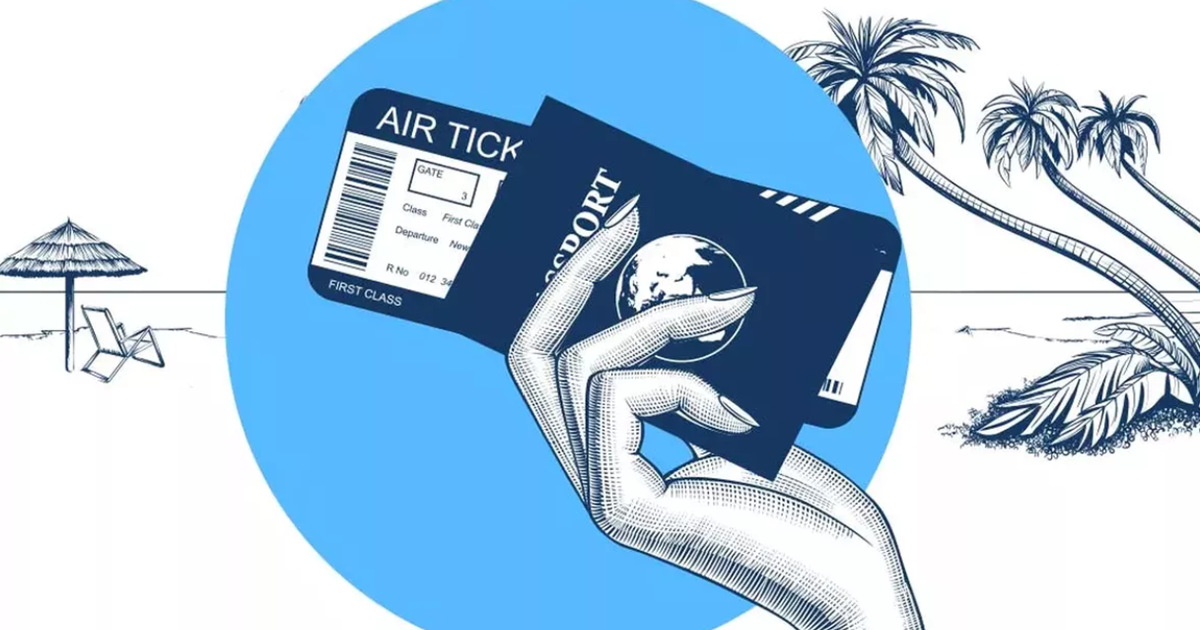Watch the return of the Blue Origin mission to Earth 1:10
(CNN) -
90-year-old William Shatner, famous for his portrayal of Captain Kirk on the original "Star Trek" series, just traveled aboard a suborbital spacecraft that skimmed the edge of outer space before landing in parachute, making him the oldest person to travel into space.
"That is unlike anything they have described," Shatner could be heard saying on the live feed of the flight just before landing.
Shatner took off aboard a New Shepard spacecraft, developed by Jeff Bezos' rocket company Blue Origin, and it's the same vehicle that took Bezos himself into space this summer.
Bezos, a longtime "Star Trek" fan, brought Shatner as a guest.
With him were three fellow crew members: Chris Boshuizen, co-founder of the satellite company Planet Labs, and software executive Glen de Vries, both paying clients, and Audrey Powers, vice president of mission and flight operations at Blue Origin.
The Blue Origin rocket, with actor William Shatner on board, takes off from the launch pad.
"What you have given me is the most profound experience, I am so full of emotion, just extraordinary," a visibly excited Shatner said to Bezos, immediately after exiting the capsule.
"I hope I never recover from this. I hope I can keep what I feel now."
His journey was not exactly like the interplanetary voyages that Shatner captained during his acting career.
The New Shepard's flight lasted just ten minutes from takeoff to landing, giving the passengers about three minutes of weightlessness.
advertising
The group entered the capsule atop the 18-meter-high New Shepard rocket on Wednesday morning after a series of wind-related delays.
At 9:51 a.m., central time, the rocket fired its engines and exceeded the speed of sound, lifting the capsule beyond the Kármán Line, which, at almost 100 kilometers high, is one of the lines used to usher in outer space.
What is the Kármán line, the limit of the space that Jeff Bezos crossed?
Shatner and his fellow travelers were expected to experience up to 5.5 Gs, which feels like five times their body weight pressing on their chest, during their trip at more than 3,200 kilometers per hour.
As it descended, a set of parachutes extended above the capsule to slow its descent, taking it from more than 200 miles per hour to less than 30 in just a few minutes.
Shatner's new record as the oldest person to fly into space surpasses the record set just three months ago by Wally Funk, 82, who was an astronaut apprentice but was denied the opportunity to fly before he joined. Bezos on his July flight.
Space tourism: the differences between the missions of SpaceX, Virgin Galactic and Blue Origin
Shatner's flight marked the second of what Blue Origin hopes will be many space tourism launches, taking wealthy and thrill-seeking clients to the edge of space.
It could be a line of business that helps fund Blue Origin's other more ambitious space projects, including the development of a 90-meter-tall rocket powerful enough to put satellites into orbit and a moon landing module.
The Blue Origin capsule, with Shatner inside, awaits recovery teams after landing in the Texas desert.
But Shatner's flight comes amid a wave of headlines that paint a picture of internal turmoil at Blue Origin, including several departures of senior staff in the wake of the loss of a key NASA contract in favor of SpaceX from Elon Musk.
A group of 21 current and former employees also signed an essay claiming that Blue Origin has a "dehumanizing" work environment that is rife with sexism.
It was also claimed that the company has created an unsafe environment and many of the trial authors "say they would not fly on a Blue Origin aircraft."
Much of the current criticism also focuses on the leadership style of Blue Origin CEO Bob Smith, whom Bezos appointed to lead the company's day-to-day operations in 2017.
Blue Origin: an essay denounces sexism and "dehumanizing" culture
at Jeff Bezos' rocket company
Blue Origin did not respond to requests for comment on the security allegations, but the company has repeatedly stated that security is its top priority.
Powers, the Blue Origin vice president who also flew on Wednesday, responded to the security allegations in an interview with CNN's Erica Hill on Monday, saying the reports gave her nothing to think about.
"I've been working at Blue on the new Shepard program specifically for the last eight years," he said.
"A very, very talented team of professionals and colleagues, some of the best I have worked with in my 20 years in manned space flight, and who are committed to the safe operation of this program."
It is safe?
Blue Origin has conducted more than a dozen test flights of the unmanned New Shepard spacecraft, and Bezos decided to conduct the first crewed flight himself in July, in part to show that he entrusts his own life to Blue's technology. Origin.
Blue Origin has described the New Shepard as a spacecraft that virtually anyone can fly in with just a few days of light training.
Although the vehicle will subject passengers to intense G-forces as it ascends and returns to Earth, the journey will not be as intense as orbital flights, such as the one SpaceX recently operated for four space tourists, which requires much faster speeds and a process reentry that makes you nervous.
(Read more about the difference between suborbital and orbital flights and somewhat arbitrary attempts to define where "outer space" begins here).
On the Blue Origin website, the following criteria are indicated for passengers:
To be 18 years old or more.
You must be between 1.5 and 1.80 meters tall and weigh between 50 and 101 kilos.
You must be in good physical shape to climb seven flights of stairs in a minute and a half
You must be able to buckle and unbuckle the seat harness in less than 15 seconds, spend up to an hour and a half tied to the capsule with the hatch closed, and withstand up to 5.5G of force during descent.
Actor William Shatner is greeted by Blue Origin CEO Jeff Bezos after exiting the space capsule.
However, space flight is inherently risky.
Getting enough speed and power to defy gravity requires rockets to use powerful, controlled explosions and complex technology that always involves some uncertainties.
"I'm really looking forward to it," Shatner told CNN's Anderson Cooper last week.
"There is an element of chance here."
However, from a physiological perspective, Shatner's age shouldn't be a problem, according to Dorit Donoviel, executive director of the Translational Research Institute for Spatial Health (TRISH), a research group led by the Baylor College of Medicine in collaboration with NASA.
Donoviel pointed to a series of studies in which people with pre-existing medical conditions, including elderly men with heart conditions, experimented with up to 6Gs in a spinning centrifuge to simulate the crushing forces the body is subjected to during spaceflight.
"They were perfectly fine," Donoviel said.
"The only thing, in terms of medical condition, that was of concern when they did those studies was really anxiety and definitely claustrophobia."
Almost in tears, William Shatner recounted his journey into space 8:09
Blue Origin passengers experience up to 5.5Gs, which can also make breathing or hand and arm movement difficult.
But they don't have to stress about piloting the fully autonomous New Shepard, so they can basically just sit back and wait for the most stressful parts of the trip to pass.
However, one thing that is absolutely crucial for them is to return to their seats as soon as mission control warns passengers that the capsule's three-minute weightlessness is about to end.
When the spacecraft begins to fall back to Earth, and the crushing G-forces return, passengers who are not tied to their seat and oriented in the proper position could be at risk of serious injury.
"If they are oriented incorrectly, the forces of gravity could pull all the blood from the head and carry it towards the feet, in which case the person would pass out," said Donoviel.
What happened?
When most people think of space flight, they think of an astronaut circling the Earth, floating in space, for at least a few days.
That's not what the passengers of the New Shepard did.
In fact, it looked a lot like Bezos' flight in July.
They went up and down straight, and they did it in about 10 minutes, less time than it takes most people to get to work.
The New Shepard's suborbital flights reach about three times the speed of sound, about 3,700 kilometers per hour, and fly straight up until the rocket uses up most of its fuel.
The crew capsule then separates from the rocket at the top of the trajectory and continues briefly upward before the capsule is nearly suspended at the top of its flight path, giving passengers a few minutes of weightlessness.
It's a kind of expanded version of the weightlessness you experience when you reach the top of a roller coaster, just before gravity pulls the car - or, in this case, the space capsule - down to the ground.
A graphic showing the new flight profile of Blue Origin's New Shepard.
The rocket, which flies separately after being detached from its carrying capsule, fired its engines again and used its on-board computers to execute a precise vertical landing.
What's the point of all this?
Blue Origin plans to use the New Shepard to compete directly with British billionaire Richard Branson and his suborbital space tourism company Virgin Galactic.
Virgin Galactic travel tickets cost about $ 450,000, more than the median selling price of a home in the United States.
Blue Origin has not publicly priced its tickets, though it recently sold one at auction for a staggering $ 28 million.
Shatner flew in as a guest, although Bezos said in July that the company has sold nearly $ 100 million in tickets in total.
Blue Origin wants to know if you would like to buy a ticket to the space: how much will it cost?
All of this is part of a much broader push by commercial space companies, and NASA, to make space a place of business.
The idea is that the private sector can stimulate innovation and reduce costs, paving the way for a future in which ordinary people - not just professional astronauts - live and work in space.
This vision has drawn much criticism, and skeptics wonder if we can build a fair future in space if only those with the means can access it.
Nor is it clear that suborbital space tourism attracts sustained interest among the world's wealthiest.
But Blue Origin and Virgin Galactic also plan to convert their technologies into other companies.
In the case of Blue Origin, that includes building a huge orbital rocket to launch military, scientific and commercial satellites and a moon landing module.
However, Blue Origin's attempt to build a vehicle that will land the next human beings on the moon was recently rejected by NASA and it is now locked in a legal battle.
Blue OriginStar Trek









